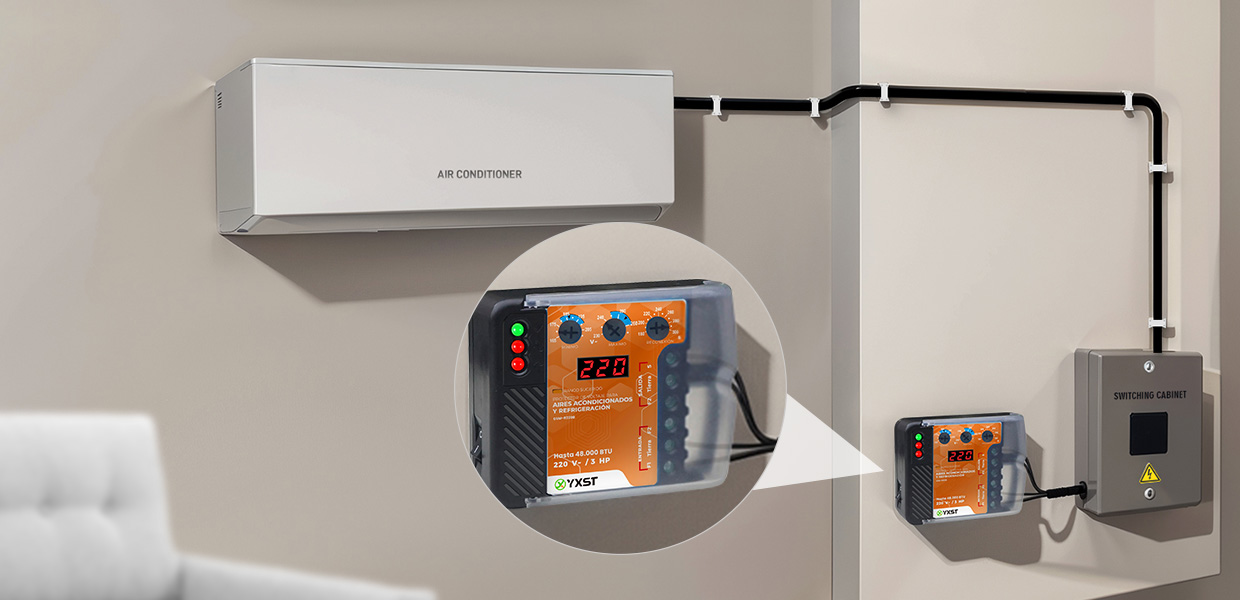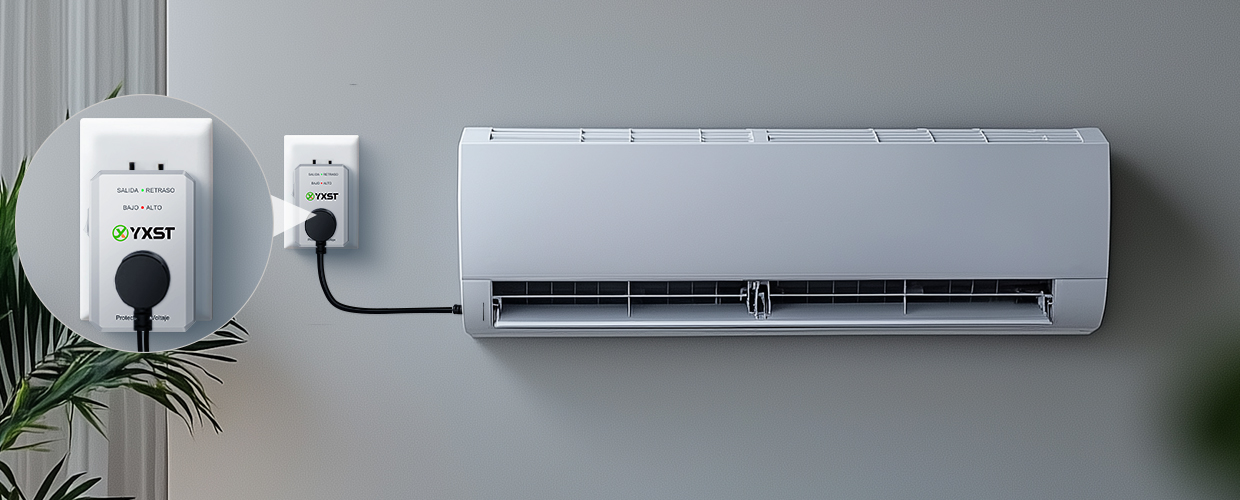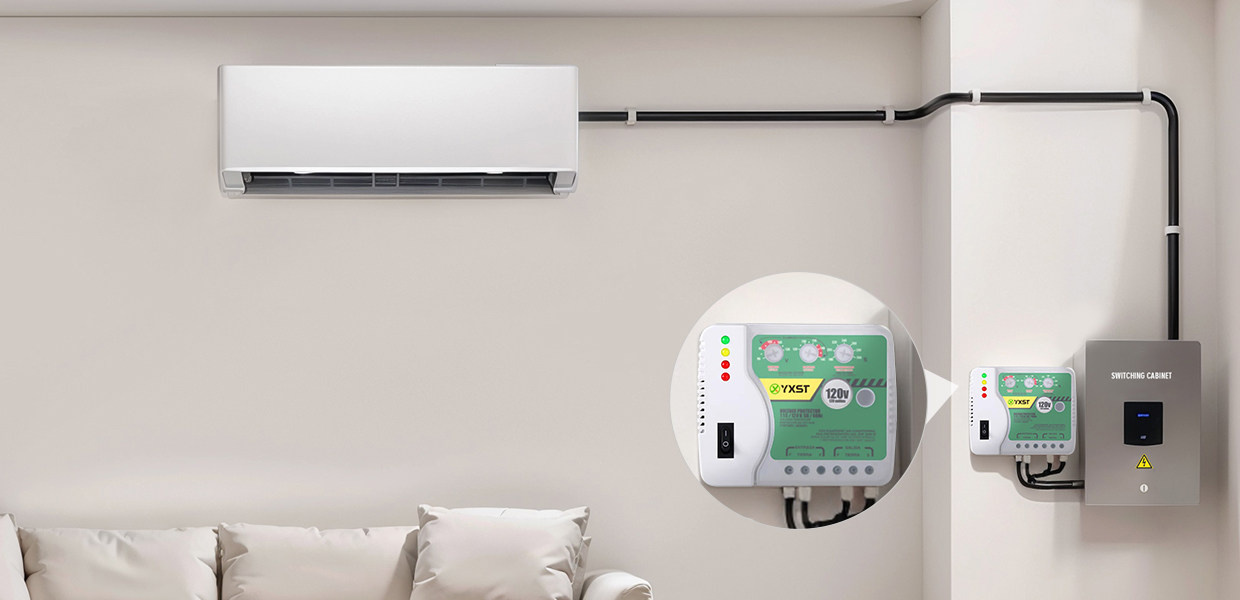Why Your Aircon Need Air Conditioner Electric Protector
Date:2025-03-20 Click:650
1. Why do you need an air conditioner electric protector?
As a high-power electrical appliance, the electrical system of air conditioners is susceptible to the stability of voltage and current. According to research, about 30% of air conditioner failures are caused by electrical problems, such as:
- Unstable voltage: Sudden voltage fluctuations may cause damage to the compressor.- Current overload: Long-term overload operation can easily cause line overheating or even fire.
- Lightning strike risk: In thunderstorms, unprotected air conditioners may be hit by surges.
Air conditioner electric protector can monitor the circuit status in real-time and avoid the above risks by automatically cutting off the power supply or adjusting the current. It can be called the "safety barrier" of air conditioners.
2. Core functions of air conditioner electrical protectors
(1) Overload and short circuit protection
When the current exceeds the safety threshold, the protector will immediately cut off the power to prevent the equipment from burning. For example, a certain brand of protector can respond to abnormalities within 5 seconds, reducing the risk of short circuits by 90%.
(2) Voltage stability regulation
Supports a wide voltage range (such as 100V-240V), suitable for areas with weak power infrastructure, avoiding frequent shutdowns caused by unstable voltage.
(3) Lightning and surge protection
The built-in surge absorption module can resist high-voltage pulses generated by lightning strikes or sudden changes in the power grid, protecting the air conditioner motherboard and compressor.
(4) Energy saving and life extension
By optimizing the current transmission efficiency, energy waste is reduced, and equipment loss is reduced. Data shows that the average life of air conditioners equipped with protectors can be extended by 2-3 years.
3. How to choose a suitable electrical protector?
(1) Match the air conditioner powerChoose a protector of corresponding specifications according to the rated power of the air conditioner (such as 1.5 horsepower, or 3 horsepower). For example, small household air conditioners require protectors with 10A-16A current, while commercial central air conditioners require models with higher capacity.
(2) Certification and safety
Prefer products that have passed international certifications (such as UL, and CE) to ensure that they meet safety standards. Avoid using unbranded or low-priced and low-quality products to prevent the risk of "protection failure".
4. Installation and Maintenance Guide
(1) Professional Installation
It is recommended that qualified electricians operate to ensure that the protector is correctly connected to the air conditioner circuit. For example, incorrect wiring may cause the protector to fail to trigger and lose its protective function.
(2) Regular Inspection
- Check the indicator light every month: confirm that the protector is in normal working condition.
- Clean the contacts every year: dust accumulation may affect the sensitivity, and the interface can be wiped with a dry cloth.
(3) Troubleshooting
If the protector trips frequently, it may indicate that there is a potential problem with the air conditioner (such as aging of the line). It is necessary to contact the maintenance personnel in time to check instead of forcibly restarting the device.
Conclusion
"Air conditioner electric protector" is not only the "safety guard" of the air conditioner but also an investment to improve energy efficiency and reduce maintenance costs. Through scientific selection and correct maintenance, users can greatly reduce the failure rate of equipment and enjoy a more comfortable and worry-free air conditioning experience.
Take action now: install an electric protector for your air conditioner and let technology escort your life!





